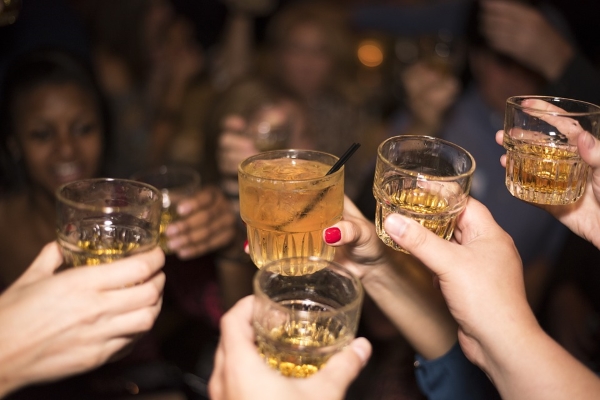
Alcohol consumers have “no general ability” to detect counterfeit alcohol by taste, new research has revealed.
Published in the journal Food Chemistry, the researchers from Germany, Kenya and Canada, sourced alcohol from Russia and Kenya, where counterfeit alcohol is a well-known and common phenomenon, and explored whether fakes could be distinguishable by taste alone. The study also used 1H nuclear magnetic resonance (NMR) fingerprints to detect any differences in the composition of genuine and counterfeit spirits.
The taste test showed there was no clear evidence that consumers could definitively pick the fake based on taste alone.
“While our research has shown that counterfeit alcohol can be detected by NMR spectroscopy, there has been the common belief (even among some experts) that consumers may be able to differentiate counterfeit alcohol by its taste. Regarding this question, our results confirm our previous study that only a sub-group of the population (40–70 per cent) is generally able to distinguish between alcoholic beverages by taste,” the researchers said.
“Therefore, one cannot assume that consumers have some responsibility when consuming counterfeit alcohol because of their potential ability to discriminate such products. The opinion that ‘experts argue that the unoriginality of the product can be revealed through the organoleptic properties of the counterfeit alcohol’ does not hold true in most cases based on the presented evidence.”
There have been a number of previous studies using organoleptic methods (involving the use of the sense organs such as taste, sight, smell) to discriminate the quality of alcohol, with variable results. Sensory analysis, for instance, was not able to differentiate between absinthes of different quality levels including counterfeit products, with the same result seen when trying to distinguish different strengths of alcohol. Yet a study distinguishing mixed and premium tequila showed preference for the premium product.
“However, it remains to be seen if sensory analysis may be used to differentiate between genuine and counterfeit brand spirits. To the best of our knowledge, neither the use of 1H NMR fingerprints nor sensory analysis has been reported for this purpose before,” the researchers said.
The team purchased a variety of spurious alcohol samples from Russia and Kenya, including Absolut Vodka, Bacardi Superior Rum Carta Blanca, Jack Daniel’s Old No. 7 Tennessee Whiskey, Johnnie Walker Red Label Scotch Whisky and Smirnoff Red Label No. 21 Vodka.
To test the authenticity, each NMR spectrum of a suspicious sample was compared with an authentic reference sample and analysed for possible differences.
For the taste test, the study used the forced-choice ISO 4120 sensory analysis methodology ‘triangle test’. The researchers were looking to see if there was a difference between two samples and if the samples could be determined as counterfeit or authentic, as well as establishing whether there was a product preference.
Individuals – who were specifically trained in basic techniques of sensory analysis but did not have any specific training in tasting or distinguishing alcoholic beverages – were given three alcohol samples from the Russian selection – 2 counterfeits/1 original or 2 originals/1 counterfeit in randomised fashion. The samples were chemically tested prior to sensory analysis to exclude health hazards such as from methanol contamination.
Results from the NMR tests showed that all counterfeit products from Russia were produced by dilution of pure neutral alcohol with water and simple addition of some additives such as flavouring and colouring agents. The Kenyan samples apart from two Smirnoff Vodka samples were authentic. The Kenyan fakes contained glycerol and citric acid.
According to the sensory analysis, the percentage that perceived a difference between the samples varied on average between 38 per cent and 72 per cent. However, only in two out of the five trials (counterfeit whiskey/ whisky trials), the testers were able to correctly assign if the different product had been counterfeit or original. Regarding taste preference, no clear result was found.
“The ability of a consumer to identify a counterfeit will depend on a) their level of experience with the spirit/brand, b) their level of ability to discriminate certain tastes and c) the level of sophistication in the counterfeit and the complexity of the product being counterfeited,” the researchers said. “Using a general population to identify a counterfeit, such an identification may be partially possible on the basis of difference, although there may be insufficient knowledge to determine which is the counterfeit. A clear assignation of counterfeit by taste appears only possible in the case of flavour-rich products such as whiskey but not for flavour-poor products such as especially vodka but also white rum.”
The researchers concluded: “In general, organoleptic testing is judged as unsuitable to distinguish counterfeit from authentic spirits.”
©
SecuringIndustry.com
 | back to top
| back to top





